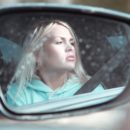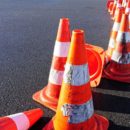Driving Fears & Driving Avoidance in Teens & Young Drivers
Reader Question: My daughter just turned 15, and no matter what I say, I can’t seem to convince her to practice her driving. It’s strange, because in the past, all she could do is talk about how excited she was to finally get her permit. I truly thought that she’d be practicing constantly once she was legally able to. Have you seen this before? Could her driving avoidance possibly be related to her OCD? Sincerely, Stressed-Out Parent Answer: Maybe, maybe not. Driving Fears May Be Normal… Driving-related anxiety is a completely normal phenomenon. For many people, learning to drive is the first time that they are individually responsible for handling a situation that could potentially be life-threatening. Although car accidents are (hopefully) rare for most individuals, accidents can be harmful (or deadly) when they do occur. Being in charge...
Read MoreHit-and-Run OCD vs. Other Driving Fears
What is hit-and-run OCD? Hit-and-run OCD (sometimes called MVA-OCD) is a subtype of obsessive-compulsive disorder that involves persistent and recurrent worries that you’ve hit someone while driving. While most people with hit-and-run OCD worry, “What if I accidentally hit a pedestrian?”, some worry about unintentionally causing car accidents, bike accidents, or property damage. Hit-and-run OCD is frequently misdiagnosed as panic disorder given that many people with panic disorder (with agoraphobia) also report a fear of driving. However, hit-and-run OCD and panic disorder are distinct conditions that may often be differentiated on the basis of their core fears. Driving Fears Related to Panic Disorder (with Agoraphobia) For someone who has panic disorder with agoraphobia, driving fears might arise because: Driving may have been associated with panic attacks in the past. Some people with panic disorder have a history of having...
Read MoreOCD & Checking: Part 2 (Mental Checking)
Behavioral Checking (Overt Checking) Many examples of compulsive checking rituals in OCD involve direct inspection of a target stimulus by sight, sound, or feel. Common OCD checking behaviors include relocking doors, visually examining the position of one’s parking brake, or holding one’s hands above stove burners in order to detect warmth. Behavioral checking is often accompanied by the thought, “Did I do it the right way?” These checking behaviors are often referred to as behavioral checks, manual checks, or overt checks. Overt rituals (by definition) are visible behaviors that can be perceived by external observers. However, in some cases, overt rituals may be subtle or purposefully hidden in order to avoid embarrassment. Mental Checking (Covert Checking) In contrast, other compulsive checking rituals can only be perceived by the individual engaging in the behavior. These types of OCD rituals are...
Read MoreChecking & OCD: Part 1 (Checking for Safety)
Compulsive checking often begins innocently enough. One check here, two checks there… But OCD’s greed knows no bounds. What starts out as a simple check “just to make sure” eventually spirals into disabling OCD doubt that can come to predominate innumerable situations and scenarios. Checking behaviors often emerge in situations in which “being irresponsible” might result in catastrophic outcomes, guilt, anxiety, or regret. OCD-related checking is usually driven by a need to obtain absolute certainty that nothing bad will happen. Compulsive checking is typically harder to control in “high stakes” scenarios and in situations in which you perceive that you have personal responsibility for the outcome. Unfortunately, at least some degree of personal responsibility is present in most situations. Moreover, many people with OCD often feel that safety is tenuous or that disasters are lurking just one mistake away....
Read MoreHit-and-Run OCD
“Hit and run” OCD involves the fear of accidentally hitting a pedestrian while driving. In most cases of hit-and-run obsessive-compulsive disorder, fears focus on unintentionally killing, injuring, or maiming a victim. Other individuals worry about causing car accidents or causing other vehicles to swerve and hit pedestrians. Fear of Driving Hit-and-run OCD, or motor vehicle accident OCD, is distinct from other syndromes that involve anxiety about driving or the fear of car accidents. Hit and run OCD differs from panic– or agoraphobia-related driving avoidance, in which individuals fear driving due to the possibility of having a panic attack while in the car. Diagnosis of hit and run OCD is slightly more complicated in cases in which one fears “losing control” while driving, as this symptom can reflect either panic or OCD. In the case of panic, this fear is...
Read More







